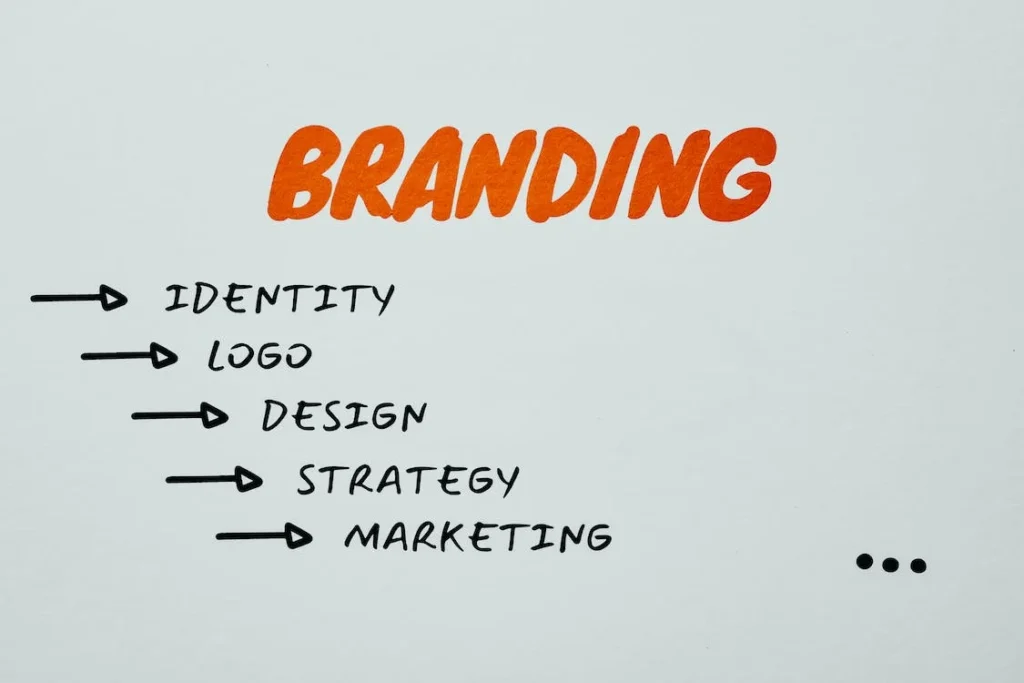This Article has been revised, edited and added to, by Poulomi Chakraborty.
- The Rise of the Conscious Consumer
- Sustainability: Beyond a Buzzword
- The Layers of Sustainability in Branding
- Greenwashing: The Dark Side of Sustainable Branding
- Integrating Sustainability into Product Development
- Strategic Partnerships for Sustainable Innovation
- Financial Models Supporting Sustainability
- Sustainability as a Core Business Strategy
- Cultivating Transparency and Consumer Education
- The Benefits of Sustainable Branding
- Crafting a Sustainable Brand Identity
- Challenges in Sustainable Branding and Overcoming Them
- Integrating Sustainability in Brand Strategy
- Conclusion: Sustainable Branding as the New Norm
In the past few years, the world has experienced a significant shift in consciousness towards sustainability and environmental responsibility. As consumers become increasingly aware of the environmental impact of their choices, brands have recognized the importance of integrating sustainable practices into their business models and branding strategies. In the age of information, merely selling a product isn’t enough; brands need to stand for something. This article delves into the role sustainability plays in modern branding and showcases how green brands resonate deeply with today’s consumer.
The Rise of the Conscious Consumer

Understanding the Shift
Today’s consumers are far more informed and aware than any preceding generation. With the vast amount of information available at their fingertips, they’re acutely aware of global challenges, such as climate change, resource depletion, and social inequality.
Digital Exposure: Platforms like social media and news apps have made it easier than ever for consumers to stay informed about environmental issues and injustices.
Educational Push: Schools and universities have been incorporating sustainability into their curriculums, molding a generation that prioritizes green practices.
How Consumer Values Have Evolved
Modern consumers aren’t just looking for utility in products; they’re seeking brands that align with their values.
Beyond Materialism: While quality and price remain crucial, many consumers are willing to pay a premium for sustainably-made products.
The Demand for Transparency: Brands can’t just claim sustainability; they need to prove it. Consumers demand transparency in supply chains, production processes, and corporate practices.
Shifting Demographics and Their Preferences
As the marketplace becomes increasingly crowded, startup founders need to recognize the subtleties in shifting demographics that influence consumer behavior. Today’s conscious consumer is not a monolith but a diverse group with nuanced differences in age, economic status, and cultural background.
Each segment may prioritize different aspects of sustainability. For instance, younger consumers might focus on climate change and carbon footprints, while older demographics could prioritize ethical labor practices and local sourcing.
For a startup, tailoring messages and products to resonate with these specifics can set a brand apart in a competitive market.
Technological Influence on Consumer Awareness
In the digital age, technology plays a pivotal role in shaping consumer awareness and decision-making. Consumers are using apps to scan products for sustainability credentials and social platforms to share their brand experiences.
Startups should leverage these technological tools to engage with their audience more interactively. For example, developing an app that allows consumers to track the sustainability journey of a purchased product can enhance transparency and boost consumer trust. Additionally, integrating with popular sustainability-focused apps can increase visibility and credibility.
Emotional Engagement and Brand Loyalty
The relationship between a consumer and a brand is profoundly affected by emotional engagement. For startups, creating a brand story that includes a clear, compelling narrative about sustainability efforts can significantly deepen emotional ties.
Storytelling that highlights a brand’s sustainable initiatives, perhaps through behind-the-scenes content or customer involvement in sustainability campaigns, can create a sense of shared purpose and community.
This approach not only enhances brand loyalty but also encourages consumers to advocate for the brand through their networks.
Leveraging Local Communities
For startups, local engagement can be a powerful tool in building a sustainable brand. By involving local communities in sustainability efforts—such as local clean-ups or sponsoring educational events—startups can demonstrate their commitment to real-world changes, not just global narratives.
This local focus can resonate deeply with consumers who are interested in seeing tangible impacts in their own neighborhoods, thereby enhancing brand trust and loyalty.
Navigating Consumer Skepticism
Despite a strong inclination towards sustainable brands, modern consumers are increasingly skeptical of superficial claims and token sustainability. Startups need to address this skepticism head-on by providing verifiable evidence of their sustainable practices.
This could involve third-party certifications, detailed reports on sustainability impacts, or transparent communication during crises. By doing so, a startup can build a reputation for honesty and reliability, crucial elements in retaining discerning consumers.
By focusing on these strategic areas, startups can effectively tap into the evolving landscape of the conscious consumer, crafting brands that are not only market-responsive but also forward-thinking in their approach to sustainability.
Sustainability: Beyond a Buzzword

The Layers of Sustainability in Branding
Branding with sustainability isn’t just about using recycled packaging or planting a tree for every product sold. It’s multi-layered, encompassing various aspects of business operations.
Environmental: This involves the direct impact on the environment, such as emissions, waste management, and resource conservation.
Economic: A truly sustainable brand also considers its economic impact, ensuring fair wages, supporting local economies, and adopting ethical business practices.
Social: The human element of sustainability. This includes fair labor practices, community engagement, and advocating for social justice.
Greenwashing: The Dark Side of Sustainable Branding
Recognizing Greenwashing: Often, these brands will use vague terms like “eco-friendly” without providing specifics or might focus on one minor green initiative while ignoring major unsustainable practices.
The Repercussions: Consumers are savvy. When brands are caught greenwashing, it can lead to significant reputational damage and mistrust.
Integrating Sustainability into Product Development
The true test for a startup committed to sustainability lies in its product development phase. Startups must adopt a life-cycle perspective when designing products, ensuring that each stage—from sourcing to disposal—minimizes environmental impact and maximizes resource efficiency.
This involves selecting sustainable materials, optimizing production processes to reduce waste, and designing products for longevity or easy recycling. By embedding these considerations into the product design phase, startups not only enhance their sustainability credentials but also position their products as superior choices for environmentally conscious consumers.
Strategic Partnerships for Sustainable Innovation
For many startups, the path to comprehensive sustainability may require collaboration with other businesses or research institutions. Strategic partnerships can provide access to new technologies, shared resources, and enhanced credibility through association.
For example, a startup could partner with a university to research biodegradable materials or join forces with a technology company to develop energy-efficient manufacturing processes.
These partnerships not only accelerate the development of sustainable solutions but also create a network of support that can propel a brand forward in the competitive market.
Financial Models Supporting Sustainability
Adopting sustainable practices often requires significant initial investment, which can be daunting for startups. To navigate this, founders should explore innovative financial models that support sustainability investments.
Options such as green bonds, sustainability-linked loans, or grants from environmental foundations can provide the necessary funds without compromising financial stability.
Moreover, engaging in responsible financial planning by projecting the long-term savings and market advantages of sustainability can help in securing investments and building a financially sustainable business model.
Sustainability as a Core Business Strategy
To ensure that sustainability transcends being a mere marketing term, it must be woven into the fabric of the business strategy. This means sustainability considerations influence decision-making at every level, from executive leadership to daily operations.
Startups should establish governance structures where sustainability goals are as critical as financial targets, ensuring these objectives are pursued with equal vigor. Regular sustainability audits and reviews can help keep the business aligned with these goals, adapting strategies as necessary to meet evolving standards and consumer expectations.
Cultivating Transparency and Consumer Education
In the age of information, consumers seek and value transparency. Startups should be proactive in communicating their sustainability efforts clearly and comprehensively. This can be achieved through regular sustainability reports, updates on social media, and engaging educational content that explains the benefits of sustainable practices.
By educating consumers, startups not only enhance their brand transparency but also empower consumers, making them active participants in the sustainability journey.
Through these strategic actions, startups can embed sustainability deeply within their brand identity, turning it into a competitive advantage that resonates with today’s eco-conscious market.
The Benefits of Sustainable Branding

Brands that genuinely integrate sustainability into their operations and ethos don’t just contribute to a better world; they also gain distinct advantages in the market.
Enhanced Brand Image and Reputation
Trust Building: A brand that practices what it preaches fosters trust among its consumers. In an era where information is abundant, authenticity is highly valued.
Media Coverage: Sustainable initiatives, especially innovative ones, can garner positive media attention, amplifying a brand’s reach and positive image.
Increased Loyalty and Customer Retention
Shared Values: Consumers are more likely to stick with brands that share their values. A commitment to sustainability can foster a deeper emotional connection with the audience.
Positive Word of Mouth: Satisfied, loyal customers often become brand advocates, spreading positive word of mouth and recommendations.
Financial Gains and Market Opportunities
Premium Pricing: Many consumers are willing to pay a premium for sustainable products. Brands can often command higher prices by ensuring and communicating the sustainable value of their offerings.
Access to New Markets: As regulations become stricter and green consumer segments grow, sustainable branding can open doors to new markets and demographics.
Enhancing Competitive Advantage through Sustainable Branding
Building Resilience in Market Positioning
In today’s volatile market, sustainability can act as a stabilizer, reinforcing a brand’s position and resilience against economic downturns and shifts in consumer preferences. Startups that integrate sustainable practices demonstrate foresight and adaptability, qualities that are highly valued in the modern marketplace.
These companies are often better prepared to comply with new regulations, adapt to supply chain disruptions, and meet the evolving demands of their customers, which can be a significant competitive edge.
Facilitating Access to Investment and Funding
Sustainability is increasingly becoming a criterion for investors, who are looking for businesses that mitigate environmental risks and demonstrate long-term viability. Startups that articulate a clear sustainability strategy often find it easier to attract funding from venture capitalists, angel investors, and green funds who are eager to back companies that contribute to a sustainable future.
Moreover, these investments can lead to improvements in operational efficiencies and reductions in costs, further enhancing the financial appeal of the startup.
Driving Innovation through Sustainability Challenges
Sustainability challenges can spur innovation, encouraging startups to explore new markets, technologies, and methodologies. By focusing on sustainable solutions, startups can uncover niche markets or create new product categories that offer substantial growth opportunities.
This approach not only fuels business growth but also stimulates creative thinking within the team, leading to innovations that might redefine existing market norms and expectations.
Solidifying Customer Relationships with Sustainability
Enhancing Customer Engagement Through Sustainability Initiatives
Engaging customers in a brand’s sustainability efforts can significantly enhance customer relationships. For instance, startups can implement programs that encourage customers to return or recycle used products, offering incentives for their participation.
Such initiatives not only reduce environmental impact but also increase customer interaction with the brand, fostering loyalty and repeat business.
Establishing Emotional Connectivity
A sustainable brand resonates on an emotional level, particularly with consumers who prioritize environmental and social values. Startups that effectively communicate their sustainability commitments can create strong emotional ties with their customers, leading to enhanced customer satisfaction and advocacy.
This emotional connection can be a powerful motivator for customers to choose one brand over another, particularly in industries where products and services are largely homogeneous.
By strategically leveraging the benefits of sustainable branding, startups can not only enhance their market positioning but also build a loyal customer base that supports and promotes their business. This approach creates a foundation for sustainable growth and long-term success in the competitive business landscape.

Related: Check out our free SEO suite

Crafting a Sustainable Brand Identity
Establishing a brand as “sustainable” goes beyond implementing eco-friendly practices. It’s about crafting an identity that resonates with sustainability at its core.
Visual Elements: Green in Design
Colors and Palettes: Green, blue, and earthy tones often resonate with sustainability, but it’s essential to choose shades that align with the brand’s personality.
Logos and Imagery: Symbols like leaves, trees, and the globe can communicate sustainability. However, brands should strive for uniqueness and avoid clichés.
Messaging: Articulating the Green Vision
Clarity and Authenticity: Brands should be clear about their sustainable initiatives, avoiding jargon and ensuring authenticity in their claims.
Storytelling: Sharing the brand’s journey towards sustainability, the challenges faced, and the victories achieved can deeply resonate with audiences.
Engaging the Community
Sustainability is Collaborative: Engage customers in the brand’s green journey. Whether it’s through planting trees for every product sold or collecting products for recycling, community involvement can amplify the brand’s sustainable impact.
Feedback and Evolution: Encourage consumers to provide feedback on the brand’s sustainable practices, and be open to evolving based on this feedback.
Reinforcing Brand Identity Through Sustainable Practices
Infusing Sustainability into Brand Narratives
Developing a compelling brand narrative that integrates sustainability can deeply resonate with consumers and differentiate a brand from its competitors. Startups should focus on weaving their sustainable practices into every story they tell, from the origin of their products to the impact of their customer’s purchases.
This narrative should not only highlight the benefits of the products but also the company’s commitment to positive environmental and social outcomes. By doing so, startups create a brand identity that stands for more than just profits; it stands for purpose and responsibility.
Leveraging Technology to Showcase Sustainability
In the digital era, technology offers unique avenues for brands to express their commitment to sustainability. Startups can utilize augmented reality (AR) and virtual reality (VR) to give consumers a virtual tour of their production processes, or use blockchain technology to provide transparent product tracing.
This technological integration helps in building a futuristic brand image that is both innovative and sustainable, appealing to tech-savvy consumers who value transparency and authenticity.
Cultivating a Consistent Visual Identity
Designing with a Sustainable Aesthetic
The visual elements of a brand, including its logo, color scheme, and packaging design, should reflect its sustainability values. For startups, this means choosing design elements that are not only aesthetically pleasing but also environmentally conscious.
For instance, using eco-friendly inks, sustainable materials for packaging, and minimalist designs can reduce environmental impact while also conveying a brand’s commitment to sustainability.
The visual identity should be consistent across all platforms and marketing materials, reinforcing the brand’s sustainable ethos at every consumer touchpoint.
Incorporating Sustainable Merchandising Strategies
Merchandising is another critical aspect of reinforcing a sustainable brand identity. Startups should consider sustainable merchandising practices such as using biodegradable materials for in-store displays or digital displays to reduce paper usage.
Additionally, the physical layout of stores can be designed to minimize energy consumption, using natural light and energy-efficient fixtures. These practices not only enhance the brand’s sustainability but also demonstrate to customers that the brand’s commitment to the environment extends beyond its products.
By meticulously crafting a sustainable brand identity through narrative, technology, visual consistency, and merchandising, startups can create a powerful and lasting impression on consumers. This identity not only attracts customers but also builds a loyal community around shared values of sustainability and innovation.
Challenges in Sustainable Branding and Overcoming Them

Higher Costs and Economic Pressures
Sustainable materials and processes can sometimes be more expensive than their non-sustainable counterparts.
Innovative Solutions: Research and innovation can often lead to cost-effective sustainable alternatives.
Long-term Perspective: While initial investments might be high, sustainable practices can lead to long-term savings and benefits.
Balancing Profitability and Sustainability
The age-old challenge: ensuring profitability while staying committed to green values.
Operational Efficiency: Brands can often find areas where sustainability and efficiency align, such as reducing waste or optimizing logistics.
Brand Differentiation: Sustainable branding can serve as a powerful differentiator in the market, justifying premium pricing and driving sales.
Navigating the Complexity of Sustainable Supply Chains
Streamlining Supply Chain for Sustainability
One of the significant challenges in sustainable branding is the complexity of ensuring a sustainable supply chain. For startups, the solution lies in selecting suppliers who share a commitment to sustainable practices.
This can involve rigorous vetting processes, investing in supplier education and collaboration, and choosing local suppliers to reduce transportation emissions. Startups need to implement supply chain management software that offers visibility and traceability of sustainable practices.
By optimizing the supply chain not only for cost-efficiency but also for environmental impact, startups can mitigate risks and enhance their brand’s credibility.
Developing a Responsive and Flexible Supply Strategy
Market dynamics and consumer demands can change rapidly, presenting a challenge for maintaining a sustainable supply chain. Startups can overcome this by developing a flexible supply strategy that allows quick adaptation to new circumstances without compromising on sustainability.
This might include having multiple suppliers for critical components or materials to avoid disruption, or building capacity for in-house production of key sustainable materials. A responsive strategy ensures that startups remain resilient and sustainable despite market fluctuations.
Enhancing Credibility Amidst Skepticism
Establishing Third-Party Certifications
In an era where greenwashing claims can undermine consumer trust, obtaining third-party certifications is a crucial strategy for startups. Certifications from reputable organizations can serve as proof of a startup’s commitment to genuine sustainability practices.
These certifications can cover various aspects, from organic or fair-trade products to carbon-neutral operations. By prominently displaying these certifications in marketing materials and on product labels, startups can enhance their credibility and reassure skeptical consumers.
Creating Transparency through Technology
Utilizing technology to create greater transparency can also address the challenge of consumer skepticism. For example, startups can use blockchain technology to create a transparent and unalterable record of the journey of products from source to sale.
This not only helps in proving the authenticity of the sustainable practices but also engages consumers by showing them the impact of their purchases.
Balancing Cost and Sustainability
Leveraging Economies of Scale
Cost is a persistent challenge in implementing sustainable practices, especially for startups that may have limited financial resources. One way to balance cost with sustainability is to leverage economies of scale.
As production volumes increase, the per-unit cost of sustainable materials and technologies can decrease. Startups should plan their growth strategy in a way that scales up sustainable practices gradually, allowing them to become more cost-effective over time.
Innovative Funding and Revenue Models
Exploring innovative funding and revenue models can also alleviate financial pressures associated with sustainable practices. Startups might consider models like crowdfunding focused on sustainability projects, or implementing a subscription service where the emphasis is on the sustainable value of products or services.
These models can provide the necessary capital to invest in sustainable technologies and processes, while also building a community of dedicated consumers who support the brand’s sustainability mission.
By addressing these challenges through strategic planning, technological integration, and innovative business practices, startups can successfully navigate the complexities of sustainable branding and position themselves as leaders in a new era of environmentally conscious business.
Integrating Sustainability in Brand Strategy

To ensure that sustainability isn’t merely a tagline or a passing trend, it needs to be woven into the very fabric of a brand’s strategy.
Conducting a Sustainability Audit
Identify the Current State: Before setting out on a path toward sustainable branding, it’s crucial to understand where the brand currently stands. This involves assessing carbon footprints, supply chain practices, waste management, and more.
Benchmark Against Competitors: Understanding what competitors are doing in terms of sustainability can offer insights and set clear targets.
Setting Clear and Achievable Goals
Short-term vs. Long-term: While it’s essential to have a long-term vision for sustainability, breaking it down into short-term, achievable goals can keep the momentum going and show progress to stakeholders.
Align with Global Initiatives: Aligning brand goals with global sustainability goals, such as the UN’s Sustainable Development Goals, can provide direction and resonance.
Building a Sustainability Team
While it’s every employee’s responsibility to drive sustainability, having a dedicated team can provide focus and expertise.
Diverse Expertise: The team should comprise members from different functions – from supply chain to marketing, ensuring holistic strategies.
Continuous Training: The world of sustainability is ever-evolving. Regular training ensures the team stays updated on best practices and innovations.
Fostering an Organizational Culture of Sustainability
Cultivating Sustainability from Within
For sustainability to be genuinely integrated into a brand’s strategy, it must first be embedded within the organizational culture. Startups can achieve this by ensuring that every employee, from top management to entry-level, understands and is committed to the company’s sustainability goals.
Training programs, workshops, and regular discussions on sustainability can help inculcate this value. It is crucial for leadership to lead by example, demonstrating a commitment to sustainable practices in their decision-making and corporate policies.
This alignment between personal and organizational values fosters a culture where sustainability is seen as a norm rather than an exception.
Aligning Incentives with Sustainable Outcomes
To encourage a culture of sustainability, startups must align employee incentives with sustainable outcomes. This could include setting sustainability targets as part of performance reviews or offering bonuses for innovative ideas that enhance sustainability.
By financially and morally incentivizing sustainability, employees are more likely to prioritize and seek out sustainable solutions in their daily tasks and long-term projects.
Leveraging Data for Strategic Sustainability Decisions
Implementing Data-Driven Sustainability
Data is a powerful tool in the optimization of any business strategy, including sustainability. Startups should invest in data analytics to track their sustainability metrics such as carbon footprint, waste management, and resource utilization.
This data can be used to identify areas of improvement, track progress towards sustainability goals, and make informed decisions that align with both business objectives and environmental impact.
By adopting a data-driven approach, startups can not only enhance their operational efficiencies but also communicate these improvements transparently to consumers and stakeholders.
Utilizing Predictive Analytics for Future Planning
Advanced data analytics, such as predictive modeling, can also play a crucial role in sustainability. Startups can use these tools to forecast future trends in sustainability, anticipate regulatory changes, and understand evolving consumer preferences.
This foresight allows for proactive adjustments in strategies, ensuring that the startup remains ahead of industry standards and consumer expectations, thereby securing a competitive advantage.
Integrating Sustainability with Brand Communication
Consistent Messaging Across All Channels
Consistency is key when communicating a brand’s sustainability efforts. Startups need to ensure that their sustainability messaging is coherent across all channels, whether it’s digital marketing, social media, or traditional advertising. This consistency helps build trust and strengthens the brand’s reputation as genuinely committed to sustainability.
Storytelling as a Tool for Engagement
Using storytelling to convey the brand’s sustainability journey can significantly enhance consumer engagement. Stories that illustrate the challenges faced, the solutions implemented, and the benefits reaped make the sustainability efforts relatable and inspiring.
These stories should highlight specific examples of how the brand’s actions are making a tangible difference, thereby making the sustainability narrative both compelling and credible.
By strategically integrating sustainability into every facet of their operations and communication, startups can ensure that their commitment to the environment is clear, impactful, and aligned with their brand values. This comprehensive approach not only helps in building a strong, sustainable brand but also in creating long-term value for the company and its stakeholders.
Conclusion: Sustainable Branding as the New Norm
The journey of sustainable branding isn’t a destination but a continuous process of evolution and adaptation. In a world facing environmental crises, brands have a responsibility, not just to shareholders but to the planet and its inhabitants.
Brands that resonate today and will continue to resonate in the future are those that understand this responsibility and embed sustainability into their very essence. They realize that profit and planet aren’t mutually exclusive but can, in fact, reinforce each other in a virtuous cycle.
For brands still contemplating the sustainable path, the time is now. Not just because consumers demand it, but because our collective future depends on it.
Read Next
- Local SEO Tactics for Green Brick-and-Mortar Businesses
- User-Generated Content: Harnessing Reviews and Testimonials for Alternative Energy Startups
- Using Video Content to Boost Your Green Startup’s SEO
- How to Promote Sustainable Stories through SEO for Sustainability-Focused Startups
- Crafting SEO-Friendly Content for Green Business Brands






















Comments are closed.